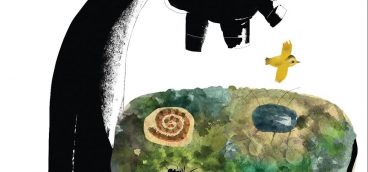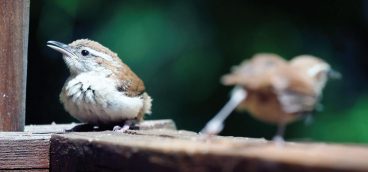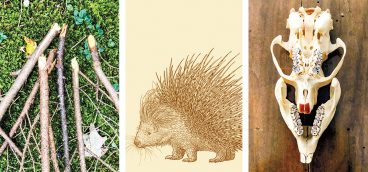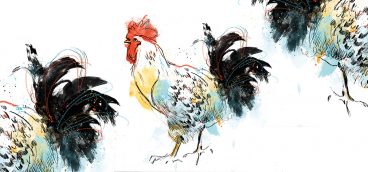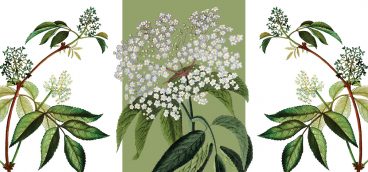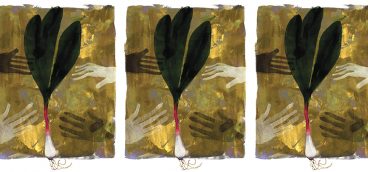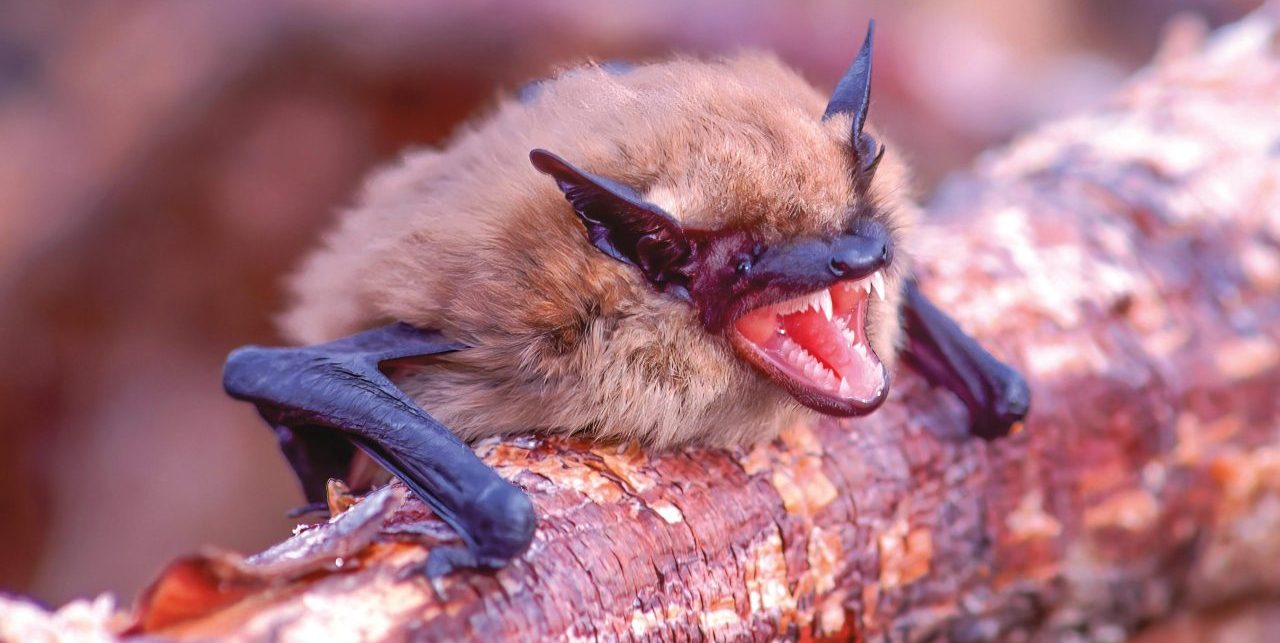
I never noticed so many ash trees in the forest until hundreds toppled over. The drumming of the ruffed grouse is dearer to me now because of its absence. But of all the things on the farm that have revealed themselves by passing away, none is more striking than the decline of bats. Thirty-five years ago, scores of bats zipped around our skies at dusk, but last summer as I walked across the stream to close the chicken coop every night, I saw one lone bat.
I used to sweep up bat guano when cleaning horse stalls. I collected bat guano from upstairs in the barn to use as fertilizer on the garden. Piles of bat guano once accumulated below two window shutters on the house where bats hung upside down by their toes during the day. But no longer. One lone bat flew into our bedroom last summer, but that used to be commonplace in this drafty old farmhouse.
A void is left in the wake of the passing away.
Pennsylvania’s Northern Long-Eared Bat was just reclassified as endangered, meaning the species is at a “very high” risk of extinction. It joins another endangered Pennsylvania bat — the Indiana Bat — and since we have only six hibernating bat species, that’s a third of our hibernating bats. (Pennsylvania also has three migratory bats.) Pennsylvania’s Little Brown Bat may be next. “We have 1 percent of the population we used to have here,” said Mollie Byrne, a Wildlife Disease Biology Technician at the Pennsylvania Game Commission. “It’s hard to wrap your brain around a decline that substantial.”
The mortality of all our bats, according to Penn State, “has been severe, with an overall decline of 99 percent,” and the decline is caused largely by humans: habitat destruction; pesticides; pollution; too much light at night; highway deaths; slaughter; and wind farms. “So many things we do as a society are detrimental to bats,” Byrne said. But worst of all is a fungal disease called white-nose syndrome, brought to the U.S. by spelunkers who visited European caves. The disease was discovered in 2006 in New York state and now affects bats in 38 states and eight Canadian provinces. The fungus attacks bats’ noses, ears and wing membranes and turns their noses — if not their entire bodies — white. They fidget and rub their faces, which awakens them from hibernation, then they fly around using energy they’ve stored to survive winter, and starve to death.
Until white-nose syndrome appeared, bats had been with us for a long time — 50 million years. They’re the second largest order of mammals after rodents and the only mammal that can fly. Some 1,400 species exist across the world, on every continent except Antarctica, and they are crucial to our planet as pollinators, seed dispensers and insectivores. But bats are so mired in myth and superstition that despite their gigantic drop in numbers, people don’t rally around them as they do elephants, pandas or whales. Many people believe bats suck your blood (Pennsylvania has no vampire bats), are dirty (bats groom themselves like house cats), carry rabies (they do, but transmission to humans is rare), and that bat guano contains tuberculosis (there is no evidence of this).
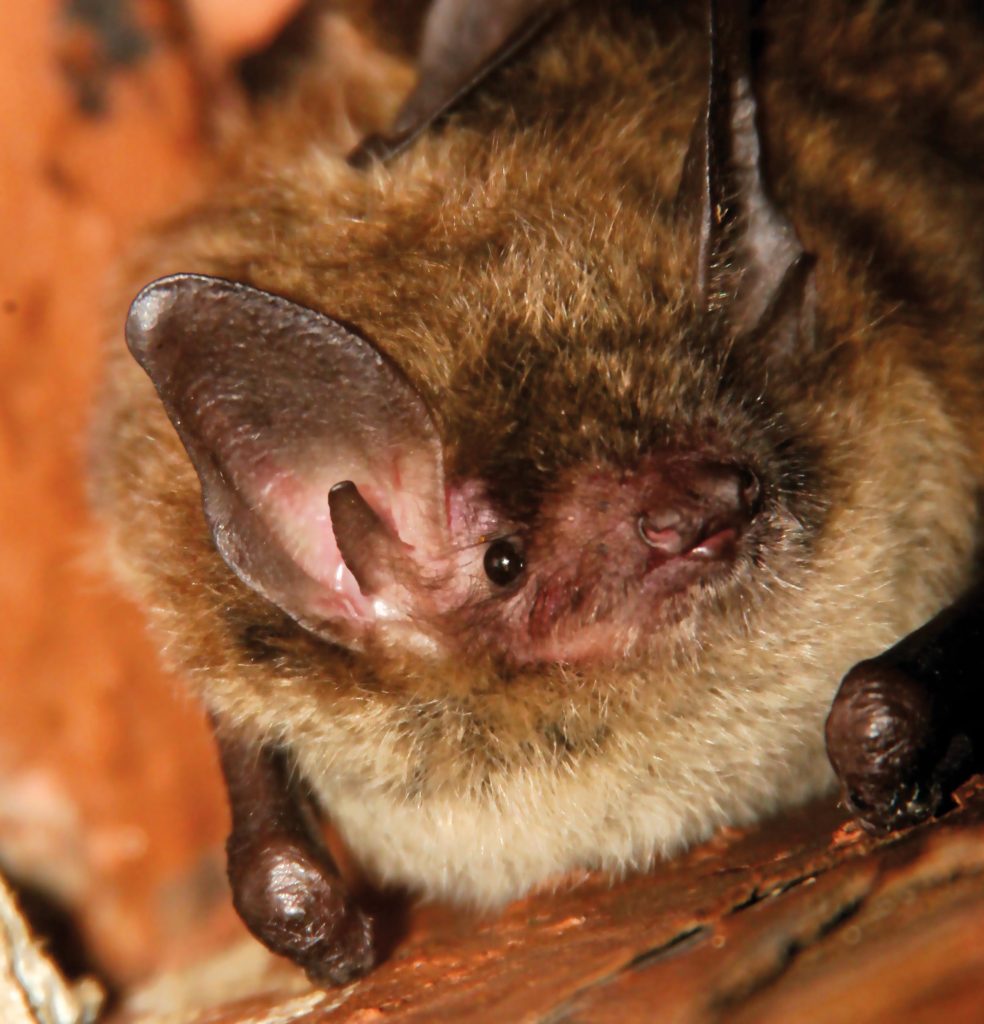
Bats don’t fly into your hair, either, though I admit I’ve been spooked by bats swooping up and down in the house, thinking perhaps they are aiming for my hair. Byrne explained to me why bats fly this way. “They’re insanely curious,” she said. “If you put up a basketball net, they’ll fly around it all night trying to figure it out. They want to know what you are too. They mean no harm. They know you’re a lot bigger than they are.” So, let’s change the narrative and look at bats not as Dracula, but as cute and curious little mammals simply trying to figure out their universe. Aren’t we, after all, just big mammals trying to figure out our universe? Maybe then people will care if bats go extinct.
Why should we care, anyway?
We should care because bats eat insects, and a lot of them — moths, June bugs, flies, leafhoppers and mosquitos — up to a million a year. A single bat can eat one-quarter of its weight in one meal and 4,500 mosquitos in one night, which helps protect us from mosquito-borne diseases such as malaria, Zika and West Nile. (For the record, West Nile has contributed to the decline of the ruffed grouse.)
Bats are “a keystone species,” which means they play a key role in our ecosystem and if we lose them, our food web will crash. Estimates are that bats save farmers $5 billion a year in crop damage due to common agricultural pests such as the cucumber beetle — and without bats to combat these pests, farmers may resort to using pesticides and insecticides, which aren’t good for our health or the planet’s. “Bats are an amazing natural defense, but that is disappearing,” Byrne said.
As a gardener, I care, because with fewer Big Brown Bats — Pennsylvania’s most common bat — my cucumber vines were decimated last summer by cucumber beetles, nighttime feeders that eat pumpkins, squash, eggplant, tomatoes, and melons — 280 species of plants in all, according to Penn State. Cucumber beetles also caused bacterial wilt on the geraniums and poppies in my flower garden and their larvae is a pest called corn rootworm. If your house is overrun by the invasive marmorated stink bug, you might care because Big Brown Bats eat stink bugs too.
Pennsylvania’s bats hibernate largely in natural caves and abandoned limestone mines — called hibernacula — most of which are contaminated already by the white-nose syndrome. The Pennsylvania Game Commission has tried for 17 years to eradicate the fungus, but their goal now, Byrne said, “is to get individual bats to survive long enough to reproduce.” But that’s a challenge in itself as even in the best of times, Pennsylvania’s bats reproduce slowly — giving birth once a year to one pup only, blind and naked at birth, which have only a 50 percent chance of survival.
The Game Commission is taking numerous approaches, such as gating caves so bats cannot be disturbed during hibernation, and adding what are called “cold air sinks,” to make mines colder — 40-45 degrees — because the fungus performs best at 53 degrees. As bats depart in spring, fungicide is being sprayed in hibernacula in “every possible book and cranny,” Byrne said, “to kill off the fungus before bats return in the fall.”
We can help too — by staying out of hibernacula, hanging bat boxes, planting native plants, and removing bats gently from our homes. “The biggest thing homeowners can do if they end up with a bat in the house,” Byrne said, “is please don’t kill it. Call a professional if you can’t get it outside yourself.”
I feel deeply the loss of all the passing away.
I’ve dusted off an old bat box in the barn, which I’d taken down for lack of visitors, but I’ll put it up again, 10-12 feet high, facing south or southeast (specifications can be found at Bat Conservation International.) Byrne said the new advice in our area is to paint the box black on top and white below, which allows for temperature gradients.
In the meantime, I’ll continue to gaze up at sunset, spanning a darkening sky, looking for the aerial maneuvers of bats, listening for their high-pitched squeals, hoping to see more than one lone bat. If nothing else, I will wish bats back into existence.


